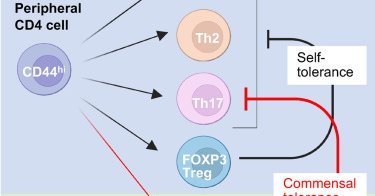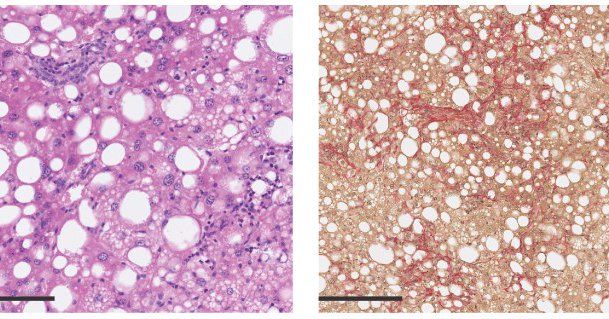
Ty Troutman
@TyTroutman3
Followers
93
Following
58
Media
2
Statuses
37
Immunologist studying gene regulation of tissue mononuclear phagocytes.
Cincinnati, Ohio
Joined August 2018
Research highlights from the Division of Allergy and Immunology at Cincinnati Children's for 2024. Looking forward to 2025!.
0
0
1
RT @babiesresearch: Learning reproductive tolerance from commensal tolerance. Kruppel-like factor 2+ CD4 T cells avert microbiota-induce….
cell.com
Intestinal colonization by antigenically foreign microbes necessitates expanded immune tolerance. Shao et al. show commensal microbiota prime expansion of immune suppressive IL-10-producing CD4...
0
17
0
My mentor/colleague @UCSDGlassLab and I put together a research briefing on our recent article in collaboration with Laurie Dempsey at @NatImmunol. It might be more accessible for non-experts than the primary article😅.
1
2
6
RT @MolecularCell: Online Now: RANK ligand converts the NCoR/HDAC3 co-repressor to a PGC1β- and RNA-dependent co-activator of osteoclast ge….
0
5
0
@NatImmunol @hbennett_mdphd @Enchen__Zhou @UCSDGlassLab @CincyChildrens A brief summary is available here:
scienceblog.cincinnatichildrens.org
0
0
1
@NatImmunol @hbennett_mdphd @Enchen__Zhou @UCSDGlassLab @CincyChildrens We also found that LPS-inducible responses may be constrained by genetic variants improving the sequence recognition motifs for lineage-determining determining transcription factors.
0
0
0
@NatImmunol @hbennett_mdphd @Enchen__Zhou @UCSDGlassLab @CincyChildrens A major finding was that Kupffer cell gene expression in different strains of mice may primarily be controlled by non-cell autonomous trans effects of genetic variation rather than direct cis and cell autonomous trans effects.
0
0
0
I am happy to share my newest publication is online today in the journal @NatImmunol. This was a joint effort with my colleagues @hbennett_mdphd, @Enchen__Zhou and @UCSDGlassLab. Plenty more great science to come @CincyChildrens!.
nature.com
Nature Immunology - The mechanisms by which noncoding genetic variation shapes tissue macrophage phenotypic diversity remain obscure. Glass and colleagues define cell-intrinsic and environmental...
3
2
10
Check out the recent research highlights being done by @RothenbergLab and Allergy/Immunology at Cincinnati Children's, my home division!. #allergy #immunology #research.
0
0
1
RT @CCHMCPostdoc: The Ty Troutman Lab has an immediate Postdoctoral Research position open! #researchjobs #postdocpositions #allergy #immun….
0
1
0
RT @KC_DC_01: Our 1st pre-print! A spatial proteogenomic atlas of the healthy mouse & human liver generated with @MartinGuilliams lab. We i….
0
49
0
RT @NEJM: Why has the United States handled this pandemic so badly? The Editors note that although we came into this crisis with enormous a….
0
15K
0
RT @emmanuellgauti1: Our latest paper "Impaired Kupffer Cell Self-Renewal Alters the Liver Response to Lipid Overload during Non-alcoholic….
0
2
0
RT @ImmunityCP: Online now: Osteopontin Expression Identifies a Subset of Recruited Macrophages Distinct from Kupffer Cells in the Fatty L….
0
41
0
6) Finally, these studies follow recommendations of @NIHdirector ( to apply findings/methods of our previous paper to studies in NASH. Though the studies here began a few years prior to studies in that paper!.
0
0
1
5) The transcription factor ChIP-seq experiments here were made possible through our novel Clec4f nuclear reporter mouse ( and sorting fluorescent nuclei (@SonyBiotechInc) after in situ fixation.
1
0
0
4) We find that Kupffer cells lose enhancer activity at LXR binding sites controlling their cellular identity, but not traditional LXR gene targets, and discover ATF3 drives in part adoption of a “lipid-associated macrophage” profile.
1
0
0
3) We predict the transcription factors controlling fate change of the macrophages and likely governing their specialized roles during NASH and find that histone acetylation is a better indicator of disease associated changes in Kupffer cells than chromatin accessibility.
1
0
1
2) We find a monocyte origin population adopts the niche and a similar molecular profile of the predominant liver macrophage, the Kupffer cell. These Kupffer cell niche recruited macrophages have a similar function to embryonic Kupffer cells and are retained for at least 4 weeks.
1
0
0




